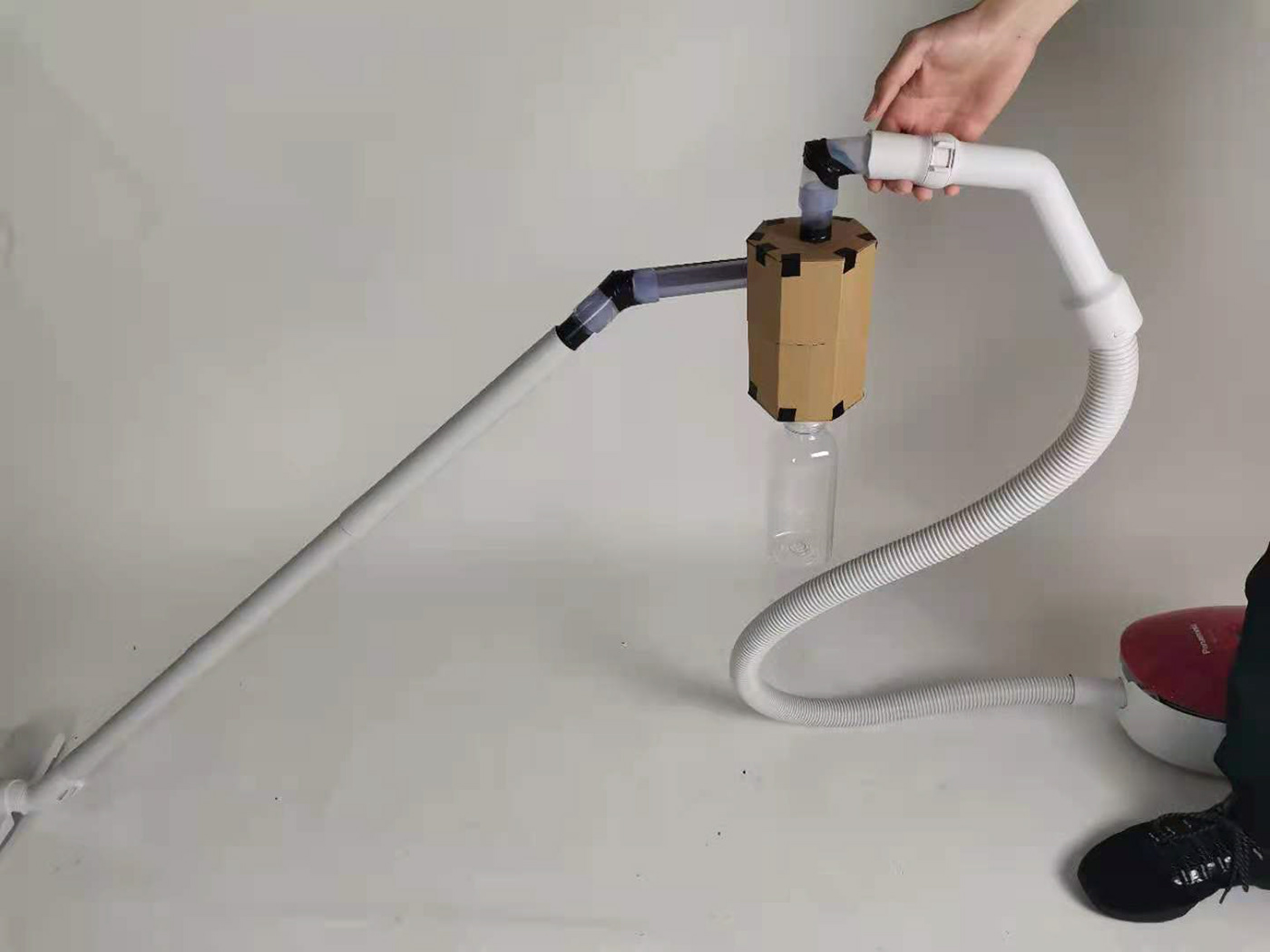
Design Process

Essentially the function of a cyclone separator is to remove the majority of the dust and debris that you suck up, and separate it out from the air stream that carries it. It does this by introducing the dust filled air to the cyclone chamber via an inlet mounted tangentially to the cylinder at the top. This causes the air and dust to circulate around the outside of the container, and as such centrifugal forces keeps the particulate mater to the outside edges. The ‘air ramp’ forces the air stream and dust particles down into the conical shaped container where the cone shape creates a cyclone with higher centrifugal air speed.
If the cyclone works well, the higher air speeds in the cone will throw the dust particles, both large and small, off to the side. Finally, near the bottom of the cone the air reaches a ‘turn-around point’. This is the crucial point when the clean air changes direction, hopefully leaving behind the particulates that it was carrying, and goes up the centre of the upper cylinder and off to the vacuum cleaner. The dust, by virtue of its inertia (and to some extent gravity) continues on down, falling into a large settling chamber where the air is almost completely still. Thus, in a helter-skelter stylee, dust goes down the chute, while the clean air moves away up the central inlet to the vacuum.




This design is a system installed in between the complete vacuum cleaner, so there is a need to consider the connection between the two sides of the system.


And to make it look like it's not just a combination of two bottles, I used some outer packaging. And the reinforcement at the joint.

Finally, some user testing.


